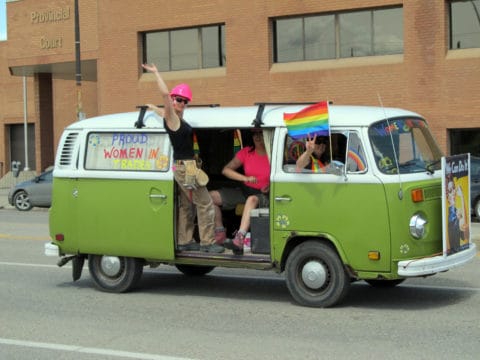As the annual Saskatoon Pride Parade approaches, LGBTQ issues are in the news and at the forefront of public consciousness. However, despite this increase in visibility, there are still members of the queer community that feel overlooked during a time that’s dedicated to celebrating queer identities.
Those of us that don’t firmly rest within the labels of gay, lesbian or even transgender — bisexuals, pansexuals, those who are sexually fluid or genderqueer and nonbinary, to name a few — often struggle with the dilemma of not being “queer enough” for the queer community, both in terms of appearance and behaviour.

This struggle is only exacerbated during Saskatoon Pride — the gayest time of year. What’s supposed to be a time for queer people to come together in solidarity can often end up being a conflicting time for some.
I identify as bisexual. I’m attracted to all kinds of genders and I’ve dated both men and women. I rest firmly in the “non-heterosexual” categorization of sexuality — and yet unless you knew me super well, you might not know it.
My longest relationship was with a guy, I’m fairly feminine-presenting and I definitely still talk about how cute I think Joseph Gordon-Levitt is. Does this make me any less queer? Definitely not. Does it make me feel like I am? Heck yes.
Last year around this time, an acquaintance of mine posted a link on Facebook to an article that criticized the presence of straight teenagers at Pride celebrations. While spaces dedicated to LGBTQ people are extremely important, the direct target of all “straight” teens at Pride has me worried.
The problem is, this isn’t the first time I’ve heard talk like this surrounding Pride and other LGBTQ related issues. Lesbians that refuse to date bisexual women because they’re “really just straight anyway” or gay bars only charging cover to those patrons that look heterosexual brings forth the same discussion. Even having a specific definition of what it means to look queer is problematic.
The thing is — unless you actually talk to a person — you have no way of knowing what their sexual identity is.
That guy holding hands with his girlfriend? He could be bisexual.
That “straight” couple kissing during the Pride Parade? One or both of them could be transgender.
That feminine-looking girl over there? They could be genderqueer or non-binary but prefer to be feminine-presenting.
When I was still dating my ex-boyfriend, I worried that it somehow made my queer identity less valid. I found myself adjusting my behavior and conversation when I was in LGBTQ spaces — avoiding talking about my relationship, wearing fewer skirts, overemphasizing just how queer I really was.
This isn’t okay. I was picking and choosing the parts of myself that I thought were “gay enough” for the queer community. Maybe that made it easier to identify me as queer, but it meant that I wasn’t being truthful. The “straight” parts of me are just as queer as the “gay” parts — because those qualities are a part of me and I’m queer.
No one should be forced to compromise on their identity, especially during a time like Pride. I was hiding parts of myself in order to fit in, which goes against everything that the LGBTQ pride movement stands for.
The movement began as an act of rebellion by a group of individuals who desperately wanted to be free to live their lives without having to hide their true selves. Although decades have passed since the Stonewall Riots in New York City, the same message still remains: those of us that exist outside the binaries of conventional society deserve as much love, freedom and respect as everyone else.
Pride is about queer people celebrating the bravery of living their unapologetic truths, and that should include the aspects that might not be considered “queer enough” for others. At the end of the day, choosing to be one’s true self in the face of adversity is the most radical thing anyone can do.
We’re here, we’re queer — and maybe this year we’ll be seen for who we really are.
—
Emily Klatt
Photo: Daryl Mitchell / Flickr